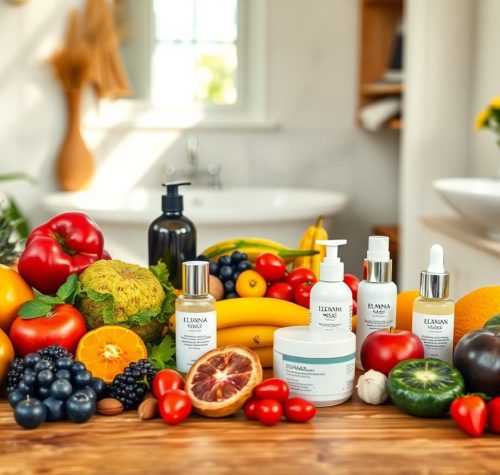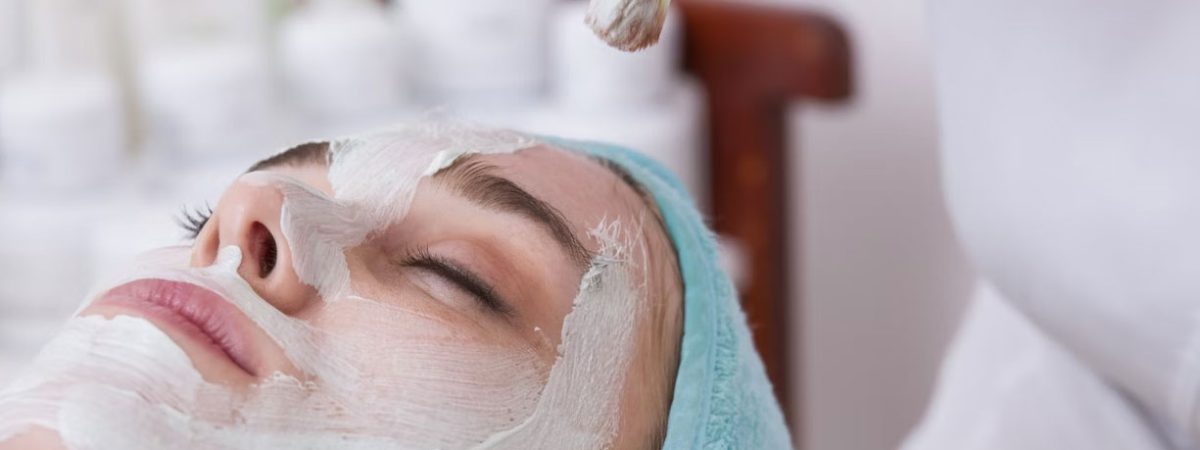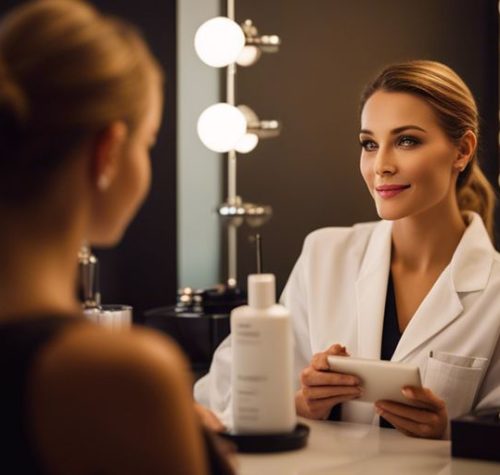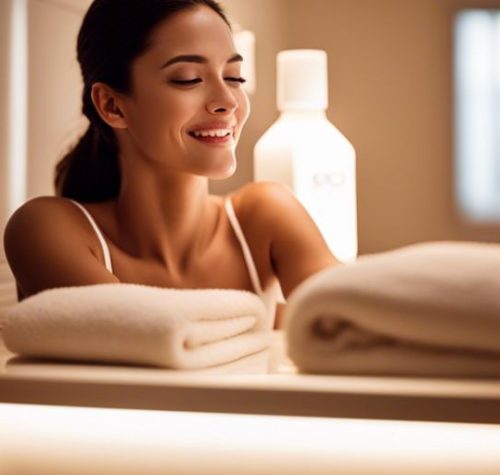Natural sunlight can be both a source of warmth and a risk to your skin’s health. Understanding how to protect your skin from harmful UV rays is vital for maintaining its integrity and youthfulness. In this guide, you will discover effective, natural strategies that you can easily incorporate into your daily routine to shield your skin from sun damage. By making simple lifestyle changes and utilizing natural remedies, you can keep your skin healthy, radiant, and safeguarded from the sun’s harmful effects.
The Alarming Truth About UV Damage
Exposure to ultraviolet (UV) radiation can lead to significant long-term skin damage, often manifesting in premature aging and increased cancer risk. A staggering statistic reveals that over 90% of skin cancers are caused by UV radiation. Many believe that indoor settings shield them from these rays, but glass windows only block UVB rays while allowing UVA rays to penetrate. Without appropriate protective measures, you could be unwittingly putting your skin at risk, as UV damage accumulates over time, resulting in irreversible effects.
Understanding UV Radiation Types
UV radiation is divided into three main types: UVA, UVB, and UVC. UVA rays penetrate deep into the skin, accelerating aging and causing wrinkles. UVB rays primarily affect the skin’s outer layers and are responsible for sunburns. UVC rays, while the most harmful, are mostly filtered by the atmosphere and rarely reach the Earth’s surface. Each type contributes differently to skin damage, making it vital to protect against all forms.
- UVA rays speed up skin aging and contribute to skin cancers.
- UVB rays cause sunburns and can lead to DNA damage.
- UVC rays are the most harmful but are generally absorbed by the ozone layer.
- Both UVA and UVB can penetrate clouds and glass.
- Recognizing the different types can help you choose the right sun protection.
- UVA – Penetrates deep, causes aging and skin cancer.
- UVB – Cuts through the outer layers, leads to sunburns.
- UVC – Most harmful, but largely absorbed by the ozone layer.
- Indoor UV Exposure – Glass offers limited protection; indoors you still risk exposure.
- Seasonal Variations – UV intensity varies with the season, but caution is needed year-round.
Consequences of Prolonged Sun Exposure
The repercussions of prolonged sun exposure range from benign to severe. Over time, you may notice an increase in fine lines, dark spots, and other signs of aging. This constant damage can culminate in the risks of melanoma, the deadliest form of skin cancer, which can develop unnoticed for years after the initial exposure. The World Health Organization reports that approximately 48,000 melanoma deaths occur globally each year, a grim reminder of the stakes involved.
When you fail to protect your skin from UV rays, you’re not only subjecting it to visible damage, such as sunburns and hyperpigmentation, but also deep-seated harm to your DNA. The cumulative effects of intermittent exposure can lead to skin cancers. Additionally, the risk of non-melanoma skin cancers is notably high, especially among those who have had multiple sunburns during childhood or adolescence. Knowledge and proactive measures are your best defenses against this alarming reality.
Nature’s Shield: Effective Natural Ingredients
In combating sun damage, certain natural ingredients stand out as superior protectors. These compounds not only shield your skin from UV rays but also promote healing and reduce inflammation. Examples include zinc oxide, a mineral that reflects sunlight, and botanical extracts like green tea and raspberry seed oil, which boast impressive photoprotective properties. By incorporating these natural warriors into your skincare routine, you can enhance your skin’s resilience against damaging sun exposure.
Antioxidants and Their Protective Role
Antioxidants play a significant role in skin protection by neutralizing free radicals that arise from UV exposure. Skin loves vitamins C and E, both of which have profound photoprotective benefits. These compounds work by preventing oxidative stress, thereby reducing the risk of sunburn, premature aging, and even certain skin cancers. Incorporate antioxidant-rich foods like berries or skin serums into your routine to bolster your skin’s defense against the sun.
Essential Oils for Sun Protection
Essential oils can serve as beneficial allies against sun damage, offering both soothing and protective qualities. Oils like carrot seed, lavender, and helichrysum not only calm sun-baked skin but also promote healing and regeneration. They contain natural compounds that provide a level of sun protection, making them perfect for therapeutic skincare blends.
Carrot seed oil, for instance, is celebrated for its ability to protect against UV damage while helping the skin rejuvenate and restore its barrier. Lavender vital oil offers anti-inflammatory properties, soothing sunburns, and promoting overall skin healing. When combined with a carrier oil, you can create a natural sun protection blend, integrating vital oils into your daily skincare regimen for enhanced resilience against sun damage. Always remember to conduct a patch test before using new oils and consider using them as an adjunct to a mineral sunscreen for optimal protection.
Lifestyle Choices That Bolster Sun Defense
Your daily habits significantly impact your skin’s resilience against UV damage. Integrating sun-safe practices into your lifestyle offers an additional layer of protection. Simple choices like minimizing your sun exposure during peak hours, seeking shade, and engaging in outdoor activities early or late in the day can help shield your skin. Regular physical activity not only supports overall health but also enhances circulation, promoting skin vitality. Prioritizing skin-friendly habits aligns perfectly with your commitment to natural sun defense.
Dietary Secrets for Skin Resilience
Clothing and Fabric as Natural Barriers
The right clothing can serve as a formidable shield against UV rays. Fabrics designed for sun protection, often rated with UPF (Ultraviolet Protection Factor) ratings, offer a robust defense. Lightweight, loose-fitting garments in darker colors tend to provide better protection. Evaluate fabric weaves; tightly woven materials block more sun compared to looser weaves. Additionally, wearing wide-brimmed hats and UV-blocking sunglasses complements your outfit, providing comprehensive coverage for your face and eyes.
Choosing the right clothing extends beyond aesthetics; it directly affects your skin’s health in the sun. Fabrics that offer UPF ratings, such as polyester and nylon, are specifically designed to absorb UV radiation rather than allowing it to reach your skin. A tighter weave can significantly reduce sun exposure, while lighter colors may reflect sunlight, keeping you cooler. Pairing long-sleeve tops and full-length pants with accessories like hats elevates your protective game. Opting for clothing that covers more skin not only enhances your protection but can also become a stylish way to express yourself while safeguarding your skin.
Daily Habits to Minimize Sun Risk
Integrating healthy daily habits into your routine can significantly lower your risk of sun damage. Start by assessing your outdoor activities and plan them during times when UV radiation is less intense, typically before 10 a.m. or after 4 p.m. Additionally, make a habit of applying a natural sunscreen with an appropriate SPF, reapplying every two hours or after swimming or sweating.
The Power of Smart Scheduling
By being strategic about your time outdoors, you can protect your skin from harmful UV rays. Schedule outdoor activities for early mornings or late afternoons when the sun’s intensity wanes. This simple adjustment can help you enjoy the sunshine while safeguarding your skin from excessive exposure.
Hydration: Your Skin’s Best Friend
Hydration plays a fundamental role in maintaining skin health and resilience against sun damage. Drinking an adequate amount of water throughout the day not only keeps you hydrated but also helps your skin remain plump and supports its natural barrier function. Aim for at least eight glasses of water daily, adjusting based on your activity level and climate.
Adding foods rich in water content, such as cucumbers, watermelons, and oranges, can enhance your hydration efforts. These snacks not only quench your thirst but also provide important vitamins and antioxidants that help combat oxidative stress caused by sun exposure. Furthermore, when properly hydrated, your skin is less prone to dryness, cracking, and inflammation, making it more resilient against the sun’s harmful effects. Keep your hydration habits in mind every day to give your skin the best chance to thrive.
The Skin-Health Connection: Stress and Sun Exposure
Understanding how stress influences your skin’s health is vital for maintaining its barrier against sun damage. High stress levels can lead to hormonal imbalances, which may trigger inflammation, increased oil production, and even skin conditions like eczema or psoriasis. The skin becomes less effective at protecting itself from harmful UV rays, making you more susceptible to sunburns and premature aging. This connection underscores the importance of managing stress to improve your skin’s resilience against sun exposure.
Why Stress Makes Your Skin More Vulnerable
Stress activates the body’s fight-or-flight response, which produces cortisol, a hormone that can lead to excessive oiliness or dryness in your skin. Elevated cortisol levels can disrupt the skin’s natural balance, making it less efficient at repairing itself and more reactive to environmental stimuli, including UV radiation. This vulnerability heightens the risk of sunburn and accelerated aging, leaving your skin in need of extra care.
Techniques to Reduce Stress and Boost Skin Health
Incorporating stress-reduction techniques into your daily routine can significantly enhance your skin’s ability to protect itself against UV damage. Practicing mindfulness through meditation, engaging in regular physical activity, and prioritizing sleep can help lower stress levels. Additionally, maintaining a balanced diet rich in antioxidants and omega-3 fatty acids supports skin health, while activities like yoga and deep-breathing exercises can further promote relaxation and improve circulation, ultimately leading to a brighter complexion and better sun defense.
Final Words
Drawing together various natural strategies to protect your skin from sun damage, you should prioritize methods like wearing protective clothing, seeking shade, and applying natural sunscreens. Incorporating antioxidants into your diet will further enhance your skin’s resilience against UV rays. Additionally, keeping your skin hydrated and using necessary oils can provide added protection. By adopting these simple yet effective practices, you can enjoy the sun while safeguarding your skin’s health for the long term.
FAQ
Q: What are some natural ways to protect my skin from sun damage?
A: There are several natural methods to safeguard your skin from sun damage. Firstly, wearing protective clothing, such as long sleeves and wide-brimmed hats, can create a barrier against UV rays. Additionally, incorporating hats made of tightly woven fabric is beneficial. Using natural oils like coconut oil and raspberry seed oil can help provide some level of sun protection. Antioxidant-rich foods, like berries, tomatoes, and green leafy vegetables, can boost your skin’s natural defense against sun damage when consumed regularly. Lastly, staying in the shade during peak sun hours (10 AM to 4 PM) can significantly reduce your UV exposure.
Q: How effective are natural sunscreen alternatives?
A: Natural sunscreen alternatives can offer some degree of protection, though they may not be as effective as commercial sunscreens with a high SPF. Ingredients like zinc oxide and titanium dioxide are popular in mineral sunscreens because they physically block UV rays. Others, like carrot seed oil and shea butter, provide lower levels of UV protection. It’s advisable to conduct a patch test and consult with a dermatologist to ensure that the chosen alternatives meet your skin’s needs and sensitivities.
Q: Can diet influence my skin’s resistance to sun damage?
A: Yes, diet plays a significant role in skin health and can enhance the skin’s resilience to sun damage. Foods rich in antioxidants, such as berries, nuts, and citrus fruits, help combat oxidative stress caused by UV exposure. Omega-3 fatty acids from fish or flaxseeds can also improve skin’s barrier function. Staying hydrated by drinking plenty of water and consuming hydrating foods can maintain skin moisture, which is vital for overall skin health. Incorporating a variety of colorful fruits and vegetables into your diet can provide the necessary nutrients to support your skin’s ability to withstand sun damage.
Q: Is it safe to use necessary oils for sun protection?
A: While some necessary oils, such as lavender and carrot seed oil, are believed to provide mild sun protection properties, caution is advised. Pure necessary oils should never be applied directly to the skin without dilution, as they can cause irritation and increase photosensitivity in some individuals. It is important to blend them with a carrier oil and to perform a patch test before widespread use. Consult a professional aromatherapist or healthcare provider for personalized recommendations for safe and effective use.
Q: How can I identify early signs of sun damage on my skin?
A: Early signs of sun damage can present in several ways. Look for changes in skin texture, such as roughness or dryness, as well as discoloration, like brown spots or freckles that appear more pronounced. Fine lines and wrinkles can also signify sun exposure. Additionally, any new growths or changes to existing moles should be examined by a dermatologist. Regular skin checks, ideally once a month, can help identify these early signs and ensure timely interventions if necessary.












